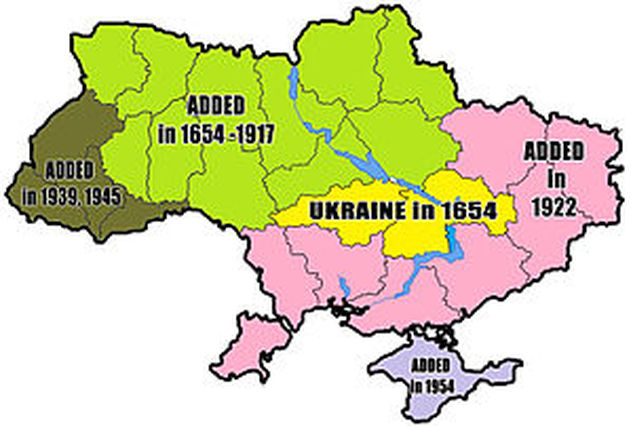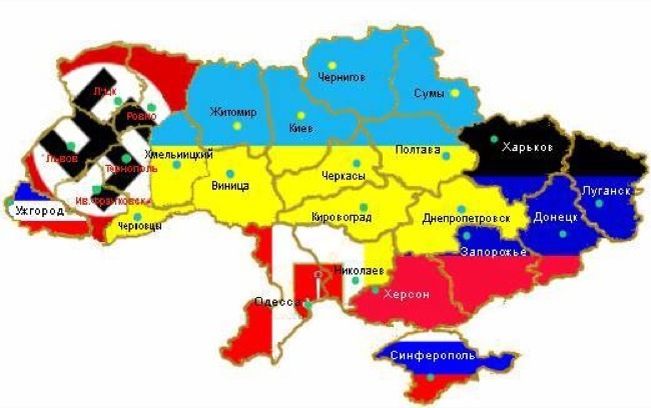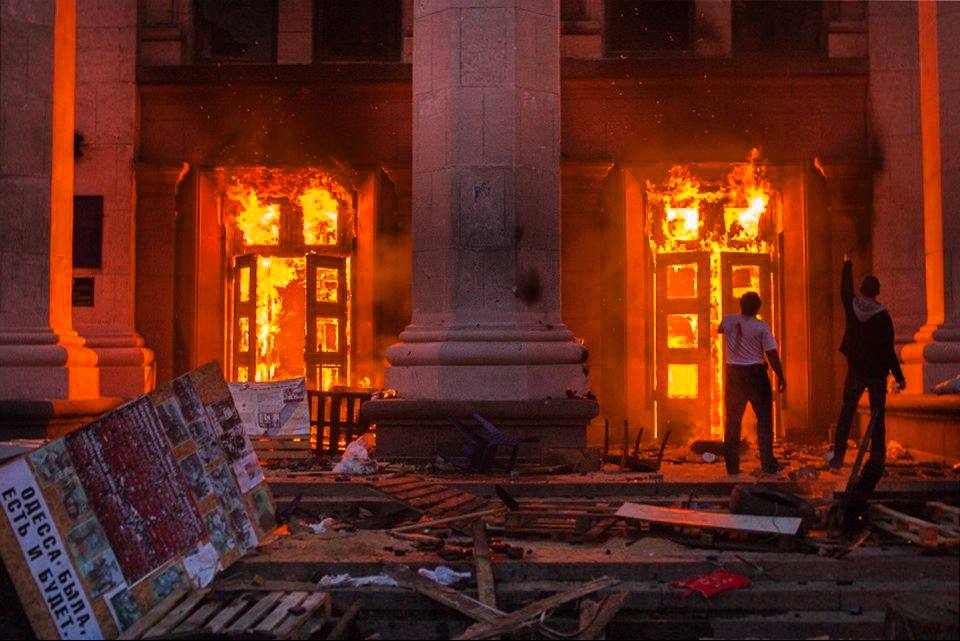Reading time: 10 minutes
One year ago, on the 5th of Agust 2014, Russian journalist Andrei Stenin and tens of other civilians were killed. Below is my translation of a Russian article, where a female local witness sheds more light on the circumstances of Stenin’s murder and the chronology of the event is reconstructed. The original article in Russian can be read at RIA.ru site.

A year after the death of photojournalist of the international news agency “Russia Today”, Andrei Stenin, in Donbass, the picture of the tragedy became more complete. Witnesses of the events told RIA Novosti what occurred near the village of Dmitrovka in those days. Back then, as a result of shelling by the Ukrainian security forces, dozens of civilians were killed, most of them still remain unidentified.
A terrible equation with many unknowns
From the set go, there were a lot of mysteries in the case of disappearance of Stenin and his friends from the newssite Icorpus.ru Andrei Vyachal and Sergei Korenchenkov. The last time they had contact, was on August 5, 2014 from Snezhnoe (translator: mean “Snowy” in Russian. Note that all villages there have Russian names) (80 kilometers east of Donetsk). In the city headquarters of the militia, the journalists said they were going to go south, to the village of Dmitrovka on the Russian-Ukrainian border – there was fighting going og there, the army and the National Guard tried to surround DPR (Donetsk People’s Republic) and cut off the Republic from Russia. Journalists could shoot some footage there. However they did not seem to reach Dmitrovka – at least, the head of its headquarters with the call sign “Poet” did not see them.
Stenin’s, Vyachal’s and Korenchenkov’s phones and did not respond. A few days later, the adviser to the Interior Minister, Anton Gerashchenko, said the photojournalist of “Russia Today” was detained by the security forces. The fact that signal from Stenin’s phone was detected in Slavyansk – 160 kilometers north-west of the Snezhnoe gave plausibility to Gerashchenko’s words – after the retreat of militia, Slavyansk was turned into the headquarters of the military operation. On the 8th of August, everyone who phoned him, received and SMS that the subscriber is available again. There was hope that Stenin was alive, even if in captivity.
But then Anton Gerashchenko denied his words, that only increased the confusion and suspicion. Soon, one of Stenin’s friends managed to get through to his number. A strange voice responded, presenting itself as a Ukrainian military. “This phone came to me by chance, through a third party. It’s owner is dead, he’s near Stepanovka. Come, take the body,” – said the stranger.
Stepanovka is located eight kilometers from Dmitrovka and about 20 kilometers from the real place of Stenin’s death. A local would never say that it’s nearby. But for newcomers, such as the military from other regions of Ukraine, it is really very close.

Today’s view of the place where Stenin was killed.
“He’s ‘Beard’ and I’m ‘Beard'”
RIA Novosti correspondent managed to find a volunteer militia fighter, who saw Stenin with colleagues in Dmitrovka on the evening of August the 5th. This is a local resident with the call sign ‘Beard’, who a year ago fought under the command of ‘Poet’. ‘Beard’ testifies: the guys came from Snezhnoe, but didn’t go into Dmitrovka further than DPR’s checkpoint.
Armed forces tried back then to surround Dmitrovka – it is one of the key settlements near the Russian border. Apparently, the journalists were afraid to be surrounded and drove back to Snezhnoe. No one knew that by being surrounded you could still be saved, but the road back would be deadly.
“Serge ‘Greek’ (militia – Ed.) then came out of Snezhnoe, ate. The journalists then came together with them, we saw them.” – ‘Beard’ suggests while browsing portraits of Andrei Stenin on a pad.
“I remember him well. He’s – beard, and I’m beard, militiaman is laughing. – Especially since I saw him before in Kozhevnja (translator: means “tannery” in Russian) (another town on the border, where there also were intense battles – Ed.).
Stenin, Korenchenko and Vyachal did not know that the situation, as so often happens on the front, changed dramatically over a few hours. The road by which they have arrived safely to Dmitrovka, was already under the control of armed forces.

Lilija and Kostja Filjushins were wounded at the same time as Stenin, but survived.
NatsGuard was shelling and refused to help
“Nazigs (local reference to National Guard fighters – Ed.) appeared here in the evening of the fifth (August). Immediately they shelled the wheat field so that it caught fire – a villager from Rassypnoe (translator: means “scattered” in Russian) recalls Stenin’s death. – They went from home to home, told everyone to sit quietly. You can eat burdocks, but remain sitting in the cellars – they said.”
Taking control of the road between Snezhnoe and Dmitrovka, security forces started firing at all the passing cars. They did not inspect, dis not hinder the passage, simply fired at them.
On the 6th of August Vladimir Zolotous and his wife Maria went from Dmitrovka to Snezhnoe to pick up her daughter and grandchildren. Snezhnoe was already de-facto surrounded. Two weeks before the city was struck by an airstrike – 13 people were killed. Then in a nearby town of Shahtersk (translator: means “Miner’s Town” in Russian) street battles began (Stenin filmed them), and on August the 4th Ukrainian security forces opened fire from Snezhnoe using “Smerch” (multiple reactive rocket launcher). Daughter asked Zolotous’ to pick them out of the horrible city and take them to Russia. However, it turned out that the real danger was awaiting not the residents of Snezhnoe, but their would-be rescuers.
“Early in the morning we went to Snezhnoe. My husband did not want to go, as if knowing what would happen to us. He said: let’s not go! It’s not far away from here, so I convinced him – says Maria Zolotous. – Once we came up onto a hill (near Rassypnoe – Ed.), bullets suddenly started punching into the car. The first bullet hit her husband. He turned off the road into a ditch. And only said, “Run!”.

A cross at the spot where Vladimir Zlatous was killed and his wife wounded
And then a miracle happened: the door of the old “Lada”, which is always jammed (Vladimir always open it from the outside, so Mary could sit) opened instantly. Mary, whose legs were hit by bullets, burst outside.
“Guys, do not shoot! We are a peaceful people!” – Shouted Maria to the soldiers. “And she dares saying something,” – they responded and shot at the car from a grenade launcher. Injured woman crawled to the village.
“I saw a car there. Later, when watching news on TV, I realized that that was Stenin’s car. Then, of course, there was no time to look at it. I only remember that the car was already burning. And I did not see whether there were people in it” – said Maria.
“Two soldiers sat in the bushes – she continues her story. – I told them I was wounded, help me!”. “We have no medicines, crawl into the village, there is help,” – said the military. Already crawling away, Mary heard one say to the other: “What is in her bag? Why did you not check and let her go.”
Gotsutsovs family sheltered Mary in Rassypnoe. The woman lived for six days in their basement, so as not to become a victim of shelling – they did wound dressings and pain was relived by simple Analgin. A week later, Zolotous relatives were able to negotiate with the military so that her son in law would come and fetch her. The woman was taken for treatment in Russia.
Like in the movies about the Nazis and partisans
Sudakov family was less fortunate – both spouses were killed in the massacre, common cleaner and a driver of the village administration. It happened the day after the death of Stenin and Zolotous, August the 7th. “Dmitrovka was shelled the day before – recalls their son Denis. – Our whole family was hiding in the basement, but my mother did not make it in time. She was wounded by shrapnel.”

Denis Sudakov at the grave of his parents, who died at the same spot as Stenin
In spite of the continued shelling, Denis’ father, a 50-year-old Vladimir Sudakov, decided to take his wife to the hospital in Snezhnoe. On the way, they were ambushed and killed on the spot. But Dennis learned about it only a few days later. “We have not had any news from them. They did not reach Snezhnoe. I called all the hospitals – even on the Russian side. They were seen nowhere.”- says Sudakov Jr.
In mid-August, when the road was unblocked, Denis found there a burnt-out car of his parents and their remains. “My mother was lying in the back seat just like I put her. Rather everything that was left of her. I collected the remains and buried them,”- he said.
It is difficult to answer what was the tactical meaning of this brutal massacre, which lasted several days. Perhaps the security forces did not want anyone to even travel along this road, and that DPR would remained blockaded. Maybe they were afraid of a surprise attack by the militia. At least six of the militia, including Sergey “Greek”, who arrived with Stenin in Dmitrovka, were also killed at Rassypnoe.
“On the 7th of August, at 04:00 in the morning, we went in a column to Snezhnoe and came under fire near Rassypnoe – says another militia fighter, Vladimir Berezov, who was wounded, but managed to escape. – We were under heavy crossfire, the car tire was shot through, we were thrown into a ditch. We abandoned the car and retreated through the “greens”. I was wounded by a bullet – shattered ankle. We decided that I would stay in the village, while the rest will go for help.”
“Vladimir crawled to us, I hid him,” – says a local resident Galina Bulygin. But soon Nazguards came searching for wounded militia.
“Beryozov hid behind the house, in a cornfield. They searched the house, walked through the area. They asked whether we saw any DPR’ers. I felt like in some movie about Nazis and partisans – says Bulygin. – They found his bunk in the basement and asked who sleeps on it. I told them that it’s my husband’s, that he is sick, and the bed is in the basement, so that not to go down every time the shelling starts.” Nazguards went away.

Personal file of Ljudmila Sudakova, who was killed at the same time as Stenin
Accurate lists of the killed are still unavailable
Stenin’s, Vyachalo’s and Korenchenkov’s car was only found on August the 20th. It was identified by two professional lenses, burned in the trunk. Camera’s body itself was not in the car – we can assume that it had been taken with the mobile phone, which was then “heard” in Slavyansk.
To one side of the car there lay unopened vials of painkillers, which the professional war correspondent Stenin always carried with him, and his expensive Italian red plaid shirt with rolled up sleeves. Again photographer’s friends started to get hope that he is alive. But the results of the examination were ruthless: the charred remains in the car belonged to Stenin, Vyachalo and Korenchenkov.
But here’s another mystery: there were remains of two more people in the car. Who are these people and how did they appear in the car, were they riding along with the journalists or were they thrown in to burn all together – it is still not known.
In total, about 20 cars were shot at near Rassypnoe in those days – some died on the spot, some managed to escape. On the 6th of August, the locals and relatives of the victims gathered at this terrible place, to commemorate all victims of the tragedy. They want to put on this place a memorial with the names of all the victims. But their exact list is still being constructed, says the head of the local village administration Oleg Harichkov.
Some of the remains were buried by the compassionate locals – in mass graves. Some took relatives with them. For example, the remains of Vladimir Zolotous are buried in two places – part of the remains were collected by the relatives of his wife in Dmitrovka, then the rest that could be recovered, was taken away by the relatives to the city of Shahtersk.
This case is still waiting for its investigation. Someday, perhaps, the names of the actual perpetrators of the massacre will be announced.












